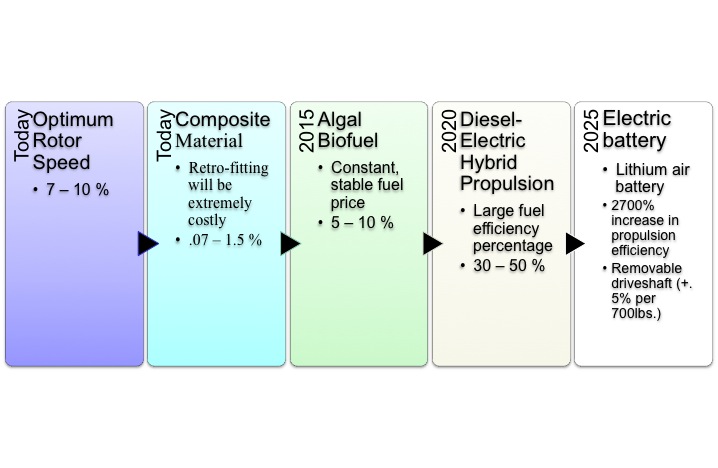Results
Our main results:
- The best technologies for increasing fuel efficiency are as follows: Hybrid Diesel-Electric Propulsion, Electric (Lithium Air), Composite Materials, Optimal Rotor Speed, and Algal Biofuel.
- We have also found that the cost of fuel will inevitably continue to rise, most likely at an increasingly exponential rate as demand also increases in other parts of the world, particularly those becoming more industrialized.
- The future of rotary craft design should depend upon the combination of one of the above specified technologies. Each one is designed and applicable to the current rotary aircraft models being procured by the military in the near future.
- Many of the technologies will need to mature over the next decade before they are applicable to military rotary aircraft, however their application is very necessary. The DoD is beginning to pursue green initiatives in their procurement policies that would require rotary aircraft to be more fuel efficient. It is incumbent then upon those that design helicopters to consider the available and maturing technologies to ensure that they are at the forefront of consideration with respect to military procurements of future vehicles.
- We estimate the cost of a gallon of fuel to approach $17 per gallon, versus the current $3.27 per gallon today. This cost should again drive not only the DoD in its procurement strategies, but also helicopter manufacturers such as our sponsor, in designing and creating rotary craft that will bring with it a substantial amount of fuel efficiency and operational cost savings.
-
The future of technologies is very bright and complex. While some technologies are available today for integration, there are several that we highly recommend investing in for research and development with regards to rotary vehicle application, as shown in the graphic below:

- More detailed results (metrics and evaluations) can be found in our Deliverables section